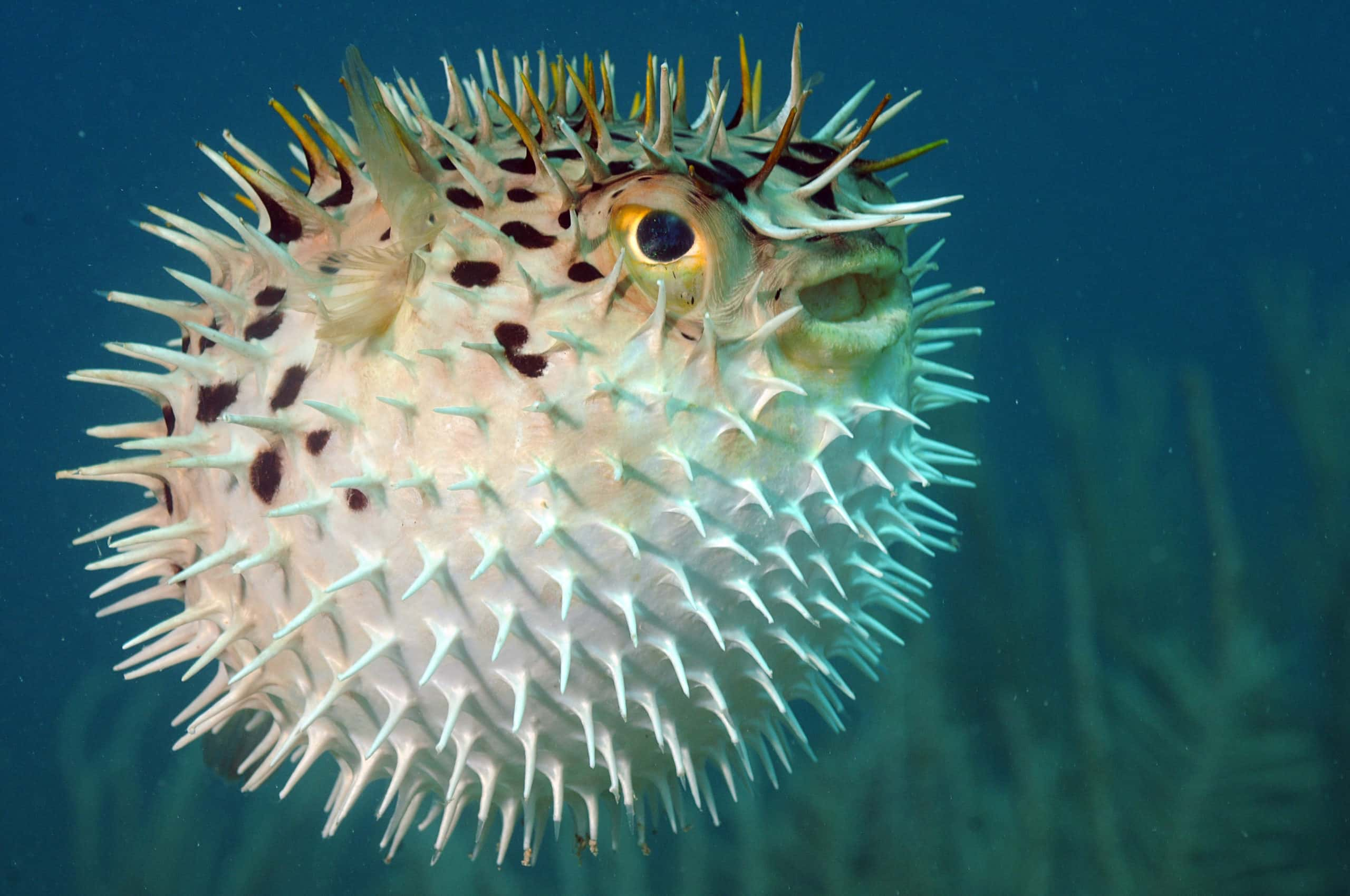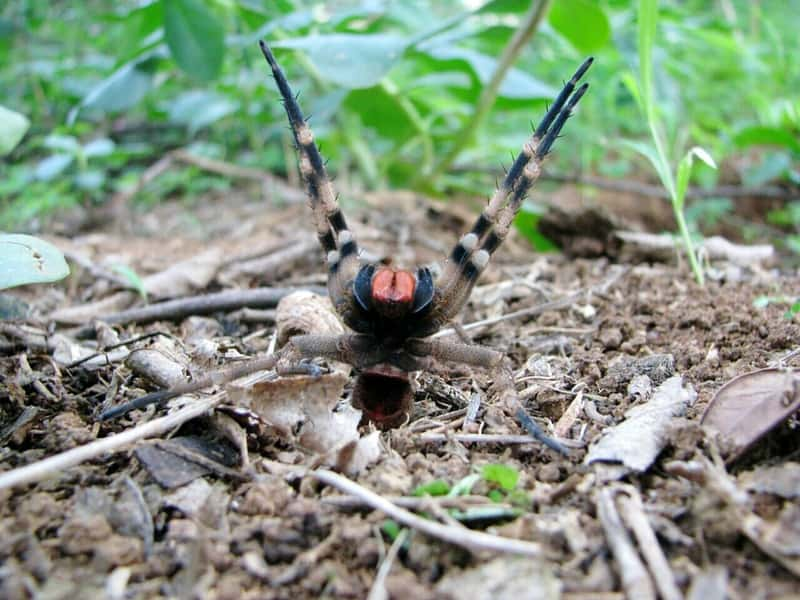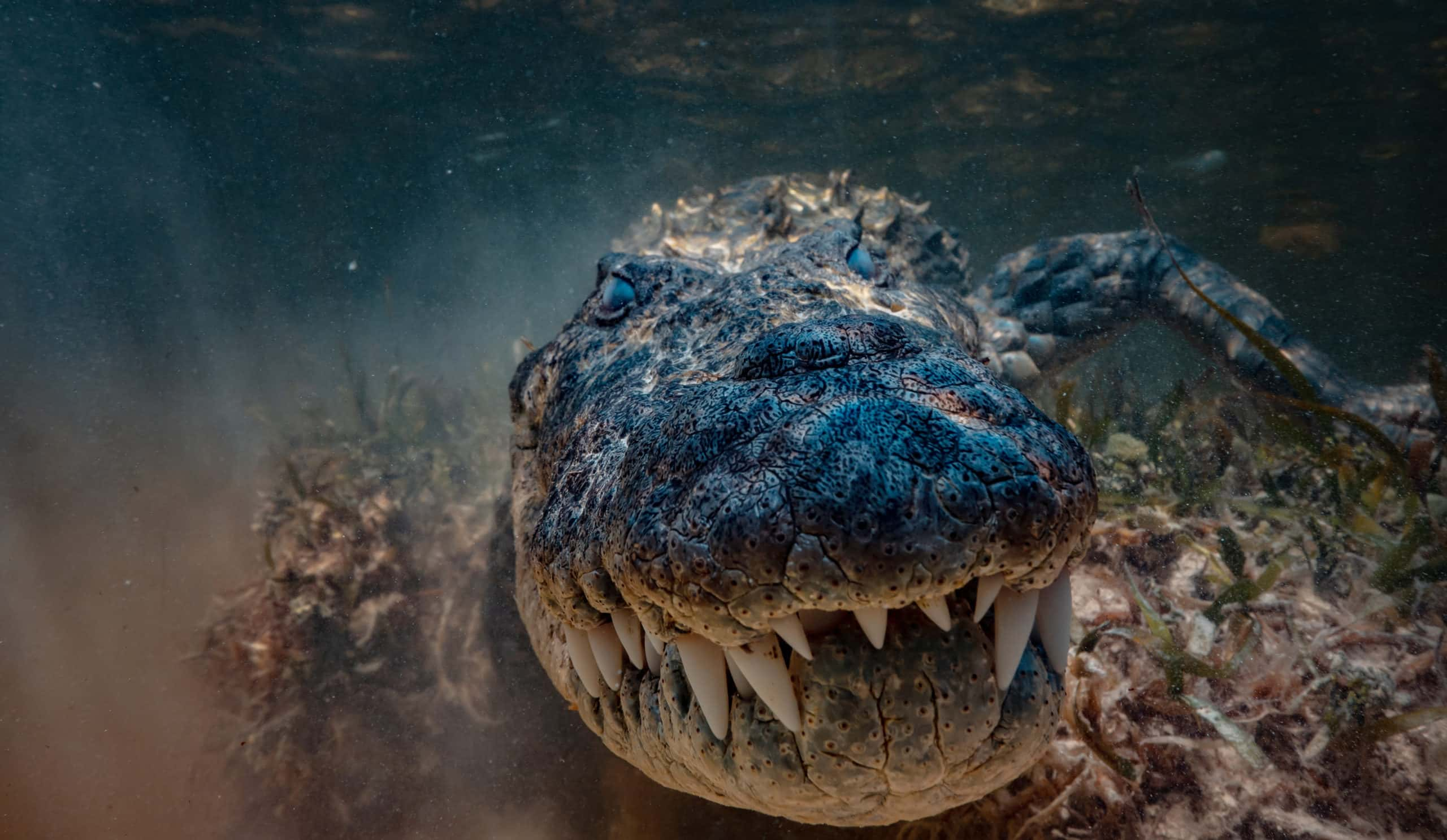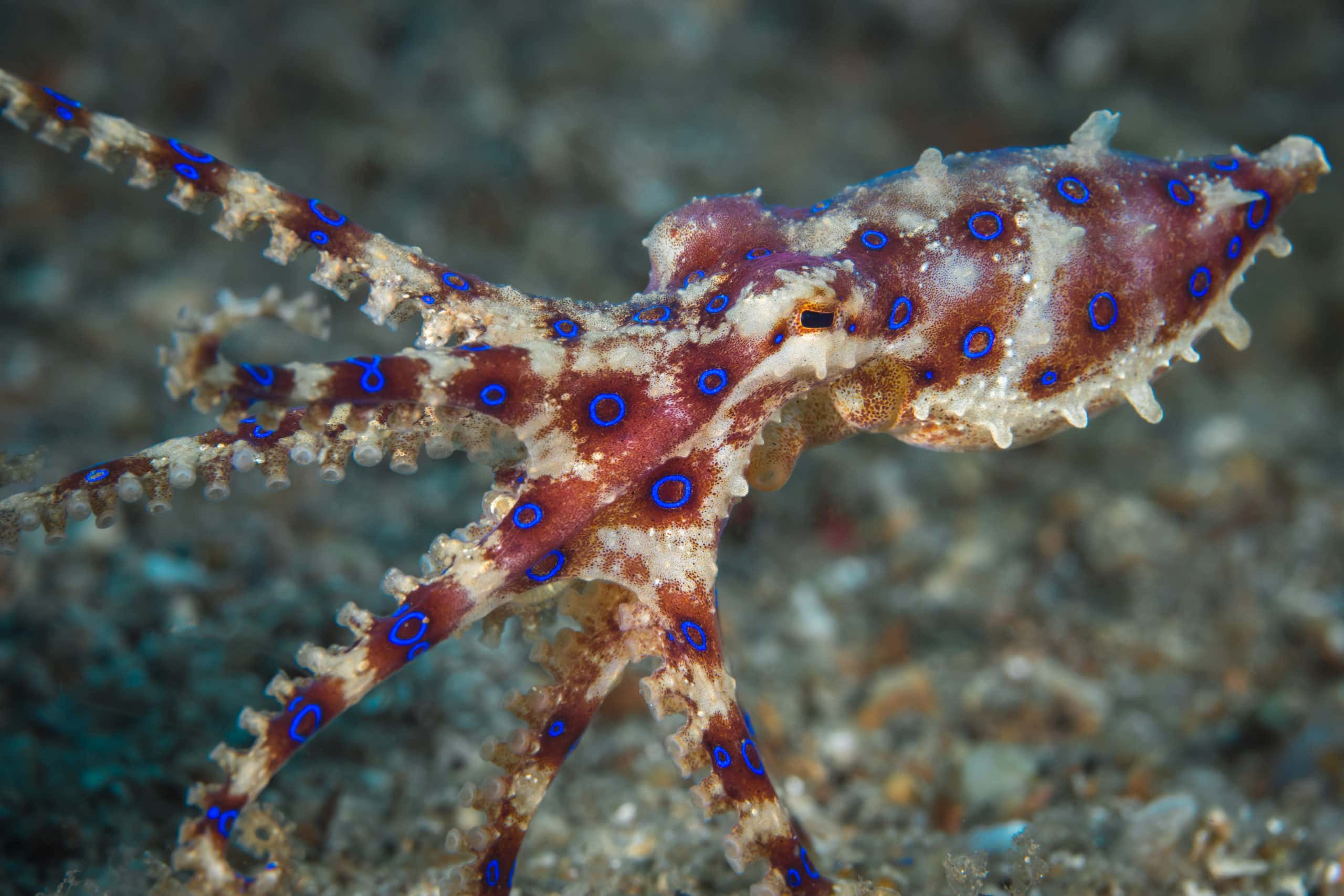The other day, I went to the zoo for the first time in ages. A kid all over again, I pressed my nose up to the glass and stared a poisonous frog right in the eye, hyperaware of the very thin piece of glass separating us. But what happens when humans collide with these lethal animals out in the real world?
From the seemingly harmless mosquito to the powerful saltwater crocodile, here's a closer look at some of the world's most dangerous animals.
1. Hippopotamus
Perhaps there's no animal as unassuming as the hippotomaus. Large, grey, and awkward-looking, it may be hard to believe that they are Africa's most dangerous mammal, but that's the truth. Usually found around the rivers and lakes of Sub-Saharan Africa, hippos are wildly territorial and unpredictable. Pair that with a mouth filled with sharp teeth—most notably, two-feet-long canines—and you've got yourself a chilling predator.
When a hippo bites down, it exerts twice the amount of pressure that a lion does—approximately 2,000 pounds per square inch. Now, imagine those powerful jaws in action. Whenever their territory is threatened, hippos will get aggressive with whoever the enemy might be: a fellow hippo, a crocodile, or even a group of tourists.
2. Box Jellyfish
Beautiful and mesmerizing, box jellyfish are the world's most venomous marine animal. These invertebrates might move gracefully and slowly through Indo-Pacific waters, but their small frames trail up to 15 tentacles. This is where the danger comes in. Not only can these tentacles group up to 10 feet long, but their surface consists of thousands of stinging cells.
These cells—or nematocysts—hold lethal toxins. To brush against a box jellyfish is to experience their venom, which attacks the skin, the heart, and the nervous system. Death is terrifyingly swift. Many human victims have been known to succumb to a jellyfish sting after going into shock and drowning. But even if you do manage to get to the hospital in time, more horrors await you.
For many survivors, the pain does not end with the antidote. The excruciating pain can linger for weeks, and the sting itself can leave significant scarring.
3. Cone Snail
Of all the cone snails, conus geographus is by far the most dangerous. Why? Well, not only is their sting the most toxic but there's also no antivenom available. In the rare case that a person gets stung, all they can do is try to stay alive while the toxins wear off. In the last 300 years, these small snails have been responsible for around 36 human fatalities.
The conus geographus also has a morbid nickname—"cigarette" snail. With absolute exaggeration, this name implies that its victims would meet their end so swiftly that they'd only have time for a single smoke. However, the reality might be even more chilling. The process of dying would actually take anywhere from one hour to five hours.
4. Golden Poison Dart Frogs
Their name says it all: golden poison dart frogs. Nope, no thank you—not touching that. As gorgeous as these yellow frogs are, these cuties carry an incredibly strong poison called batrachotoxin. And guess what? Only two micrograms of the stuff is enough to kill a man. To put that into perspective, that amounts to the size of the head of a pin.
You see, with their poisonous glands located underneath the skin, these frogs can destroy you with a single touch. In fact, throughout history, the Indigenous Emberá people used this toxin on the tips of their blow darts. So, if you happen to see one of these rare frogs (most likely in the Colombian Pacific coast), stay as far away as possible.
5. Cape Buffalo
Found in Sub-Saharan Africa, the Cape buffalos seem like mild-mannered creatures, that is, until they feel threatened. In moments of uncertainty or injury, they transform into a hunter's worst nightmare. After all, their nickname is "Black Death," which is not so subtle. Of any other creature, they are the biggest threat to African hunters.
First of all, they're massive, nearly weighing a ton. And? They're fast as heck, reaching speeds of 35 miles per hour. Once they start charging your way, there's no stopping them—not even an injury. Add on a mean set of horns, and this is a burly animal you don't want to enrage.
6. Indian Saw-Scaled Viper
In terms of animal phobias, the fear of snakes is way up there. However, if you're going to fear one snake, it better be the Indian saw-scaled viper. Their camouflage makes them difficult to spot, and they make a distinctive sizzling sound when they enter defense mode. This eerie sound results from a behavior called stridulation. This is when the snake shapes itself into a coil and rubs its scales together.
The saw-scaled viper can attack without warning, and their bite is the worst part—each chomp is more than double a lethal dose.
7. Pufferfish
We can all recognize a pufferfish, sometimes called a blowfish. After the golden arrow dart frog, they're the most poisonous vertebrate in existence. And, as brilliant humans, we've decided that, yes, this is the kind of fish we want to consume. In Japan, pufferfish is a delicacy called fugu. But even preparing this fish is risky because its neurotoxin is everywhere—in its skin, tissue, liver, kidneys, and gonads.
This neurotoxin, called tetrodotoxin, is 1,200 times stronger than cyanide. So, if the pufferfish is prepared incorrectly, ingesting it can prove fatal. That's why only the best-trained and licensed chefs attempt to cook it. That being said, multiple people fall prey to the delicious pufferfish every year. Go ahead, take a bite...see what happens.
8. Inland Taipan Snakes
Yup, another snake. Luckily, inland taipan snakes aren't prone to aggression with humans unless they're provoked. However, if you do happen to get on their bad side, you could experience one of the most harrowing demises known to man. Their venom is the most toxic of all snakes. Only one bite has the power to take out 100 adult humans. YUP. And that's not all.
Considering its remote homeland in Australia, it's highly unlikely that a victim would be able to access the antivenom in time. Thus, the dramatic lead-up to your expiry would include organ failure, convulsions, and paralysis. If you're ever in central East Australia, watch out.
9. Brazilian Wandering Spiders
To me, this is a giant spider. Compared to the spiders in my world, this honker can grow to five to seven inches long. No thank you. Although called the Brazilian wandering spider, these fun creatures can actually be found in Central as well as South America. First off, they are not shy. They will venture into highly populated places and take up residence in all kinds of nooks and crannies that are too close for comfort—clothes, cars, log piles, and shoes.
Not only are they obnoxiously brash, but they're also venomous. Cool cool cool.

History's most fascinating stories and darkest secrets, delivered to your inbox daily.
10. Stonefish
The most dangerous fish to humans is also a master of camouflage. Most fittingly, its name is stonefish, because it looks like a rock and blends seamlessly into the seabed. For wayward human feet, these fish are a disaster waiting to happen. The harder one steps on a stonefish, the more venom they inject. But their dangerous dorsal fins aren't their own defense.
If needed, they also have a lachrymal saber—basically a sharp blade on their face. Here's the hard truth: After squishing a stonefish underfoot, victims are likely to survive only an hour. To pull through, access to antivenom is an absolute must.
11. Saltwater Crocodile
Swimming around the Indo Pacific region, the saltwater crocodile strikes fear into the hearts of many. For one, they are enormous, reaching lengths of up to 23 feet. They also weigh more than a ton. That said, it's no surprise that the crocodile takes down hundreds of human victims per year. In fact, crocodiles are even more dangerous than sharks. But that's not all.
The bite of a saltwater crocodile rivals that of the extinct dinosaur, T. Rex—3,700 pounds per square inch of pressure to be exact.
12. Tsetse Fly
Flies can be pesky and annoying, but guess what? They can also be deadly. The tsetse fly terrorizes the Sudans, the Democratic Republic of the Congo, and Angola. Sure, they come out when it's nice and warm and suck your blood, but that's not why they're so feared. They also spread parasites called Trypanosomes—and this causes the African Sleeping Sickness, which reaps some disturbing neurological symptoms.
Those infected can experience altered behavior, poor coordination, and disrupted sleep cycles. And if you don't take action in treating it, your mortality will most surely come knocking.
13. Blue-Ringed Octopus
Hailing from the Pacific ocean, the blue-ringed octopus can really pack a punch. And it's probably much smaller than you think—about the size of a golf ball. With its iridescent blue rings, this beautiful creature will hurt you when threatened. In its arsenal? A neurotoxin that is 1,000 times stronger than cyanide. Unlike some of these other dangerous animals, however, the blue-ringed octopus' bite often goes unnoticed.
Many unwitting victims who handle the tiny octopus won't even realize that they've been bit.
14. Mosquito
Perhaps, at first, the common mosquito doesn't seem very scary. It's small and pesky and makes us itchy, but collectively, mosquitoes are much more powerful than that. In terms of the number of deaths they're responsible for, these tiny flies definitely earn their spot on this list. Several species of mosquitoes carry pathogens that cause diseases like malaria, West Nile virus, and encephalitis, to name a few.
An estimated 700 million people have been affected by mosquitoes, with approximately 725,000 passing every single year. According to the WHO, the majority of the human population is at risk of the diseases they spread.
15. Humans
Last but not least, is us—humans. Not only have we become experts in destroying the world around us, but we also destroy each other. In fact, for 10,000 years, people have been wiping one another out. War has taken the lives of between 150 million and 1 billion people. Throw in our proclivity for amassing nuclear devices and ignoring climate change and you know what you have? The most dangerous animal on earth.


























